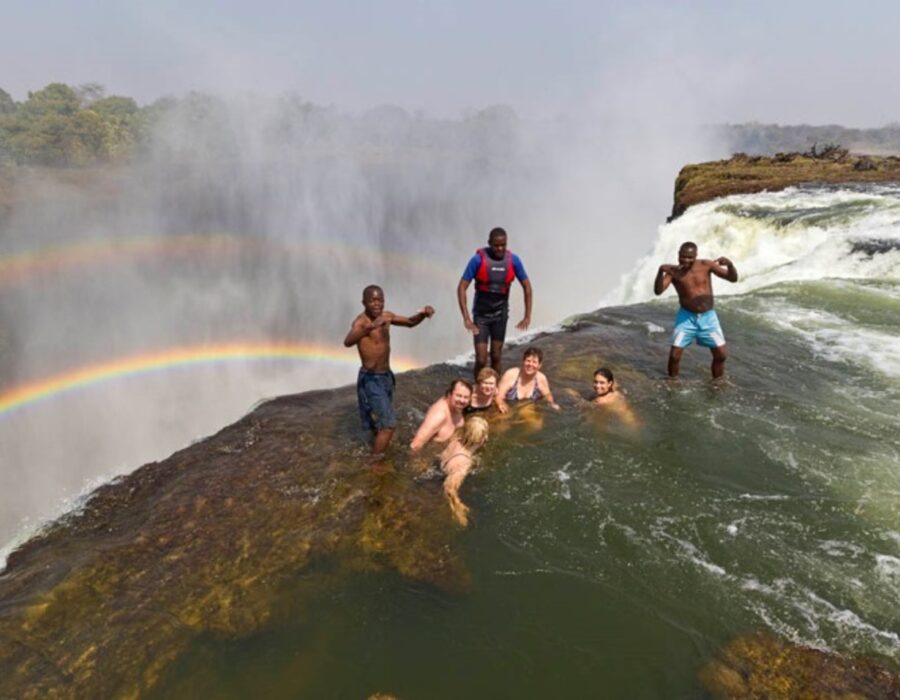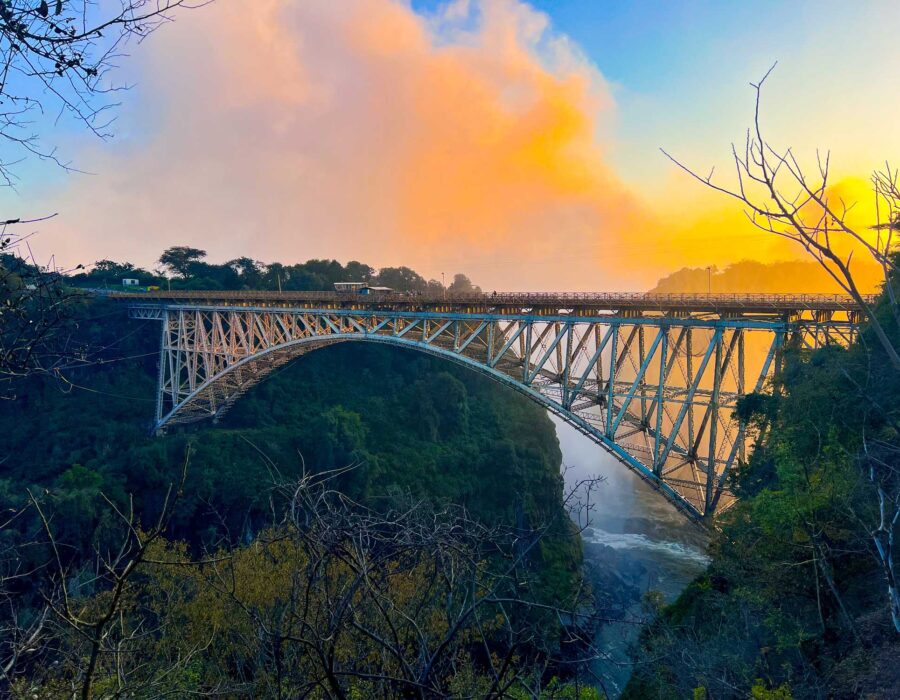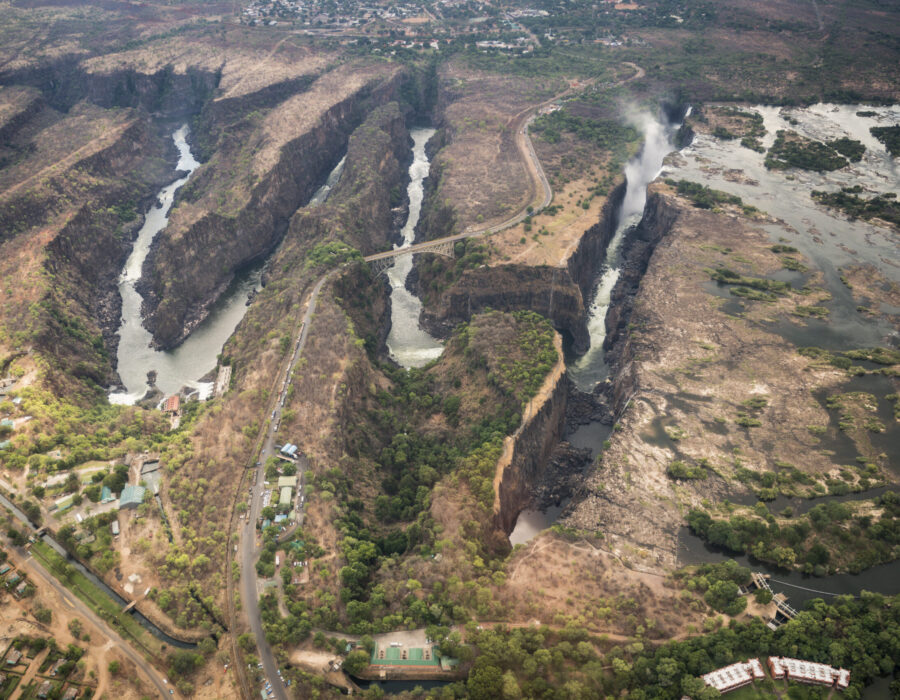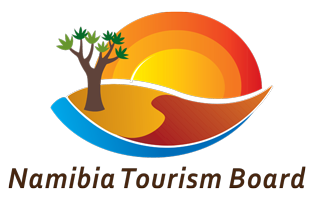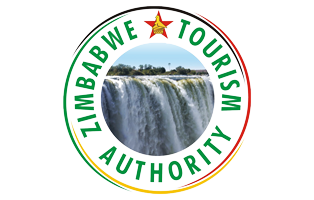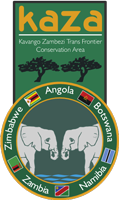The Kavango Zambezi region is home to some of the world’s most iconic UNESCO World Heritage Sites, each showcasing the extraordinary natural and cultural treasures of this unique area. These sites are not only globally significant but also offer visitors unparalleled experiences of beauty, history, and biodiversity. From breathtaking landscapes to sacred cultural landmarks, these destinations highlight the region’s importance in preserving both nature and human heritage for future generations.
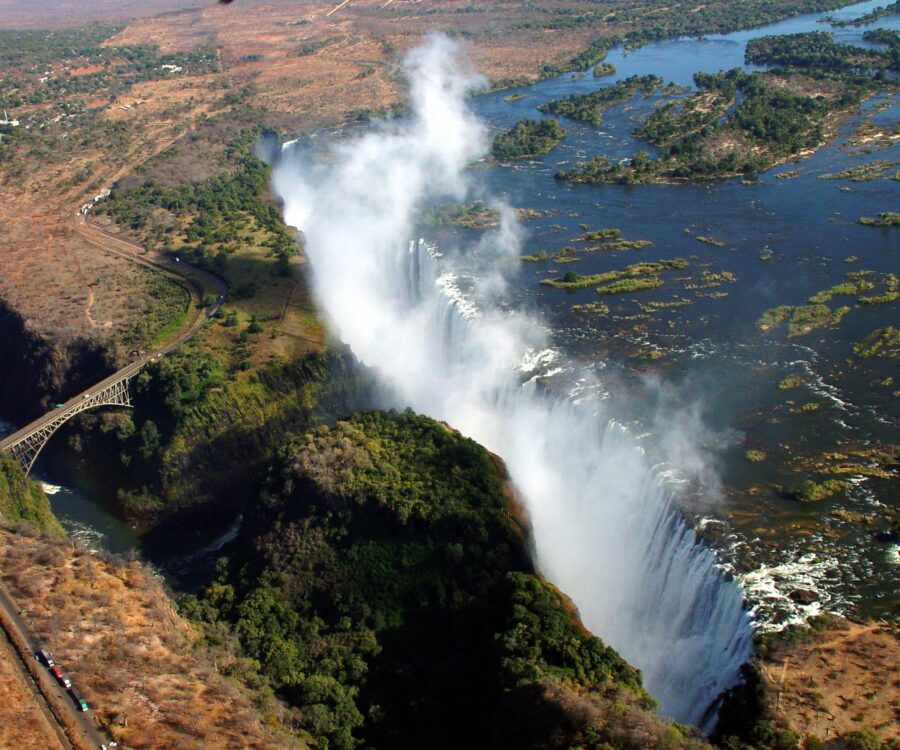
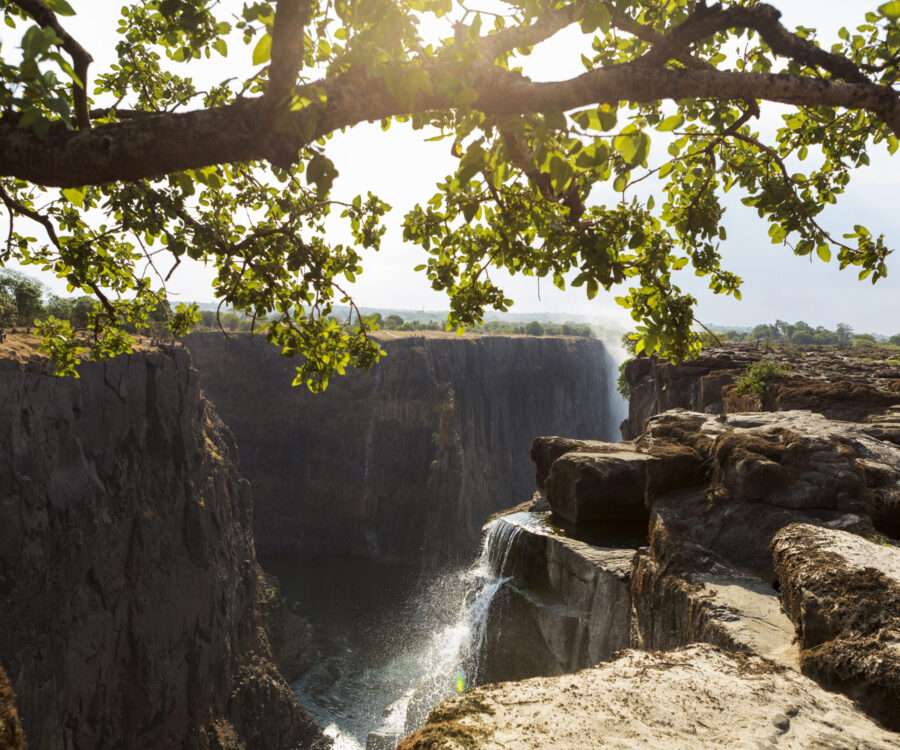
Victoria Falls
Victoria Falls, locally known as “Mosi-oa-Tunya,” meaning “The Smoke that Thunders,” is one of the most awe-inspiring natural wonders of the world. Straddling the border between Zimbabwe and Zambia, the falls are a UNESCO World Heritage Site and a bucket-list destination for travellers from across the globe. At over 1,700 meters wide and plunging 108 meters into the Zambezi Gorge, Victoria Falls is the largest curtain of falling water on Earth and a breathtaking spectacle of raw power and beauty.
Adventure Activities
Victoria Falls is a hub for adventure, offering experiences that cater to thrill-seekers and nature enthusiasts alike. Highlights include:
- Devil’s Pool: A natural rock pool on the edge of the falls where daring visitors can swim during low-water season.
- Bungee Jumping: Leap off the Victoria Falls Bridge for an adrenaline-pumping view of the gorge below.
- Gorge Swinging: Experience a heart-stopping free fall over the Zambezi Gorge.
- White-Water Rafting: Tackle the exhilarating rapids of the Zambezi River downstream of the falls.
Natural Beauty:
The sheer scale and majesty of Victoria Falls make it a sight to behold. During the rainy season, the falls roar with cascading water, creating plumes of mist visible from miles away. Visitors can explore multiple viewpoints on both the Zimbabwean and Zambian sides, each offering unique perspectives of this natural wonder. The surrounding rainforest, sustained by the falls’ constant spray, is rich with plant and bird life, adding to the area’s enchantment.
Cultural and Historical Significance
Victoria Falls holds a deep cultural significance for the local communities, serving as a sacred site in traditional beliefs. Stories and myths about the falls have been passed down through generations, enriching its mystical allure. The site also has historical importance, as it was first brought to international attention by explorer David Livingstone in 1855. Visitors can delve into this history at local museums and cultural centers.
Practical Information
- Best Time to Visit: March to May for the fullest flow or August to December for clearer views and adventure activities like Devil’s Pool.
- Access: The falls can be accessed from the towns of Victoria Falls (Zimbabwe) and Livingstone (Zambia), both offering a range of accommodations, tours, and transport options.
- Entry Points: Both Zimbabwe and Zambia have well-maintained pathways and viewing areas, ensuring a safe and memorable visit.
Okavango Delta
The Okavango Delta is a UNESCO World Heritage Site and one of the most extraordinary ecosystems in the world. Spanning over 15,000 square kilometers in northern Botswana, this inland delta is created by the seasonal flooding of the Okavango River. Unlike most deltas, it does not flow into the sea but spreads out across the Kalahari Desert, creating a vast and dynamic wetland. Renowned for its pristine beauty and unparalleled biodiversity, the Okavango Delta offers visitors a unique blend of serenity and adventure.
Natural Beauty
The Okavango Delta is a mosaic of winding waterways, tranquil lagoons, lush papyrus swamps, and open floodplains. The landscape transforms dramatically with the seasons, as the annual floodwaters arrive between May and August, turning the area into a lush paradise. Visitors can witness stunning sunrises and sunsets over shimmering water channels, while the sounds of nature create a soothing backdrop.
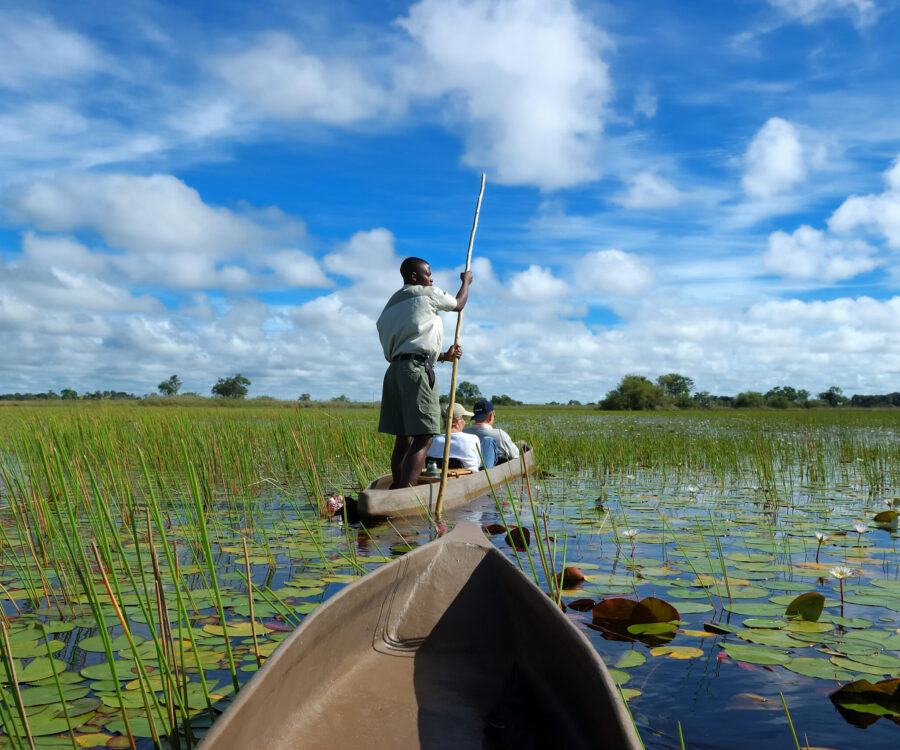
Wildlife and Biodiversity
The Okavango Delta is a haven for wildlife, supporting one of the densest concentrations of animals in Africa. Visitors can encounter elephants, lions, leopards, hippos, crocodiles, and more, as well as endangered species such as African wild dogs and cheetahs. The delta is also a paradise for birdwatchers, with over 400 recorded species, including the iconic African fish eagle and rare Pel’s fishing owl.
Adventure Activities
The Okavango Delta offers a range of immersive experiences, including:
- Mokoro Safaris: Glide through the delta’s waterways in a traditional dugout canoe, guided by local experts.
- Walking Safaris: Explore the delta’s islands on foot, accompanied by knowledgeable guides who bring the ecosystem to life.
- Game Drives: Venture into private concessions for exclusive wildlife encounters.
- Helicopter Rides: Get a bird’s-eye view of the delta’s breathtaking landscapes.
Cultural and Historical Significance
The Okavango Delta is deeply intertwined with the lives of local communities, particularly the BaYei and Hambukushu people, who have lived sustainably in the region for centuries. Visitors can experience traditional fishing methods, crafts, and storytelling while learning about the importance of conservation for the area’s future.
Practical Information
- Best Time to Visit: June to October during the dry season, when the floodwaters are at their peak and wildlife viewing is at its best.
- Access: The delta is accessible via the town of Maun, which serves as the main gateway, and smaller airstrips in the delta’s lodges and camps.
- Accommodations: Options range from luxury lodges to mobile safari camps, all offering immersive experiences in the heart of the wilderness.
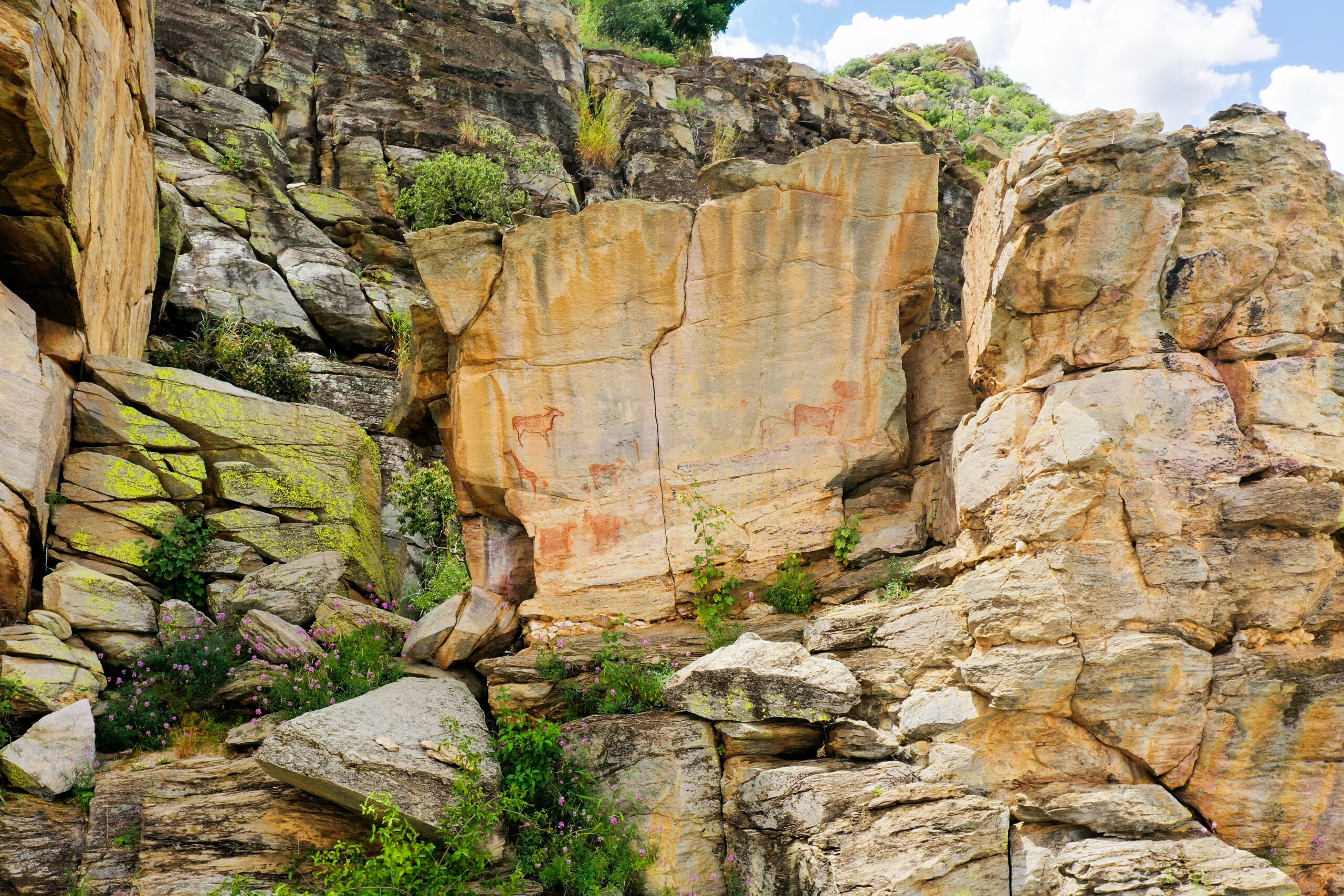
Tsodilo Hills
Known as the “Louvre of the Desert,” Tsodilo Hills in northwestern Botswana is a UNESCO World Heritage Site celebrated for its breathtaking landscapes and cultural heritage. The site contains one of the world’s largest concentrations of ancient rock art, with over 4,500 individual paintings spread across approximately 400 sites. These sacred hills have been a place of spiritual significance for millennia, holding deep cultural and historical importance for the San people.
Natural Beauty
The Tsodilo Hills rise dramatically above the surrounding Kalahari landscape, forming an iconic silhouette visible for miles. The site consists of four main hills: Male, Female, Child, and North Hills, each with distinct geological features and spiritual significance. Visitors can explore rocky outcrops, ancient caves, and panoramic vistas that offer a glimpse into the region’s timeless beauty.
Cultural and Historical Significance
Tsodilo Hills is a living archive of human history, with rock paintings dating back over 20,000 years. The artworks depict animals, humans, and abstract symbols, offering insights into the spiritual beliefs, hunting practices, and daily lives of the region’s early inhabitants. The hills are considered sacred by the San people, who believe the spirits of their ancestors reside here. Guided tours with local experts provide visitors with fascinating stories and interpretations of the site’s significance.
Adventure Activities
Exploring Tsodilo Hills is an enriching experience, offering opportunities such as:
- Rock Art Tours: Guided walks to discover the best-preserved and most intricate rock art sites.
- Hiking: Trekking through trails of varying difficulty levels, surrounded by stunning natural scenery.
- Cultural Interaction: Learn from local communities about their traditions, beliefs, and the importance of Tsodilo Hills in their heritage.
Practical Information
- Best Time to Visit: May to October during the dry season, when temperatures are milder, and trails are more accessible.
- Access: The hills are located approximately 40 kilometers from Shakawe in northwestern Botswana and are accessible by 4×4 vehicles.
- Accommodations: Visitors can stay in nearby lodges or campsites, providing a convenient base for exploring the area.

 Angola
Angola  Botswana
Botswana  Namibia
Namibia  Zambia
Zambia  Zimbabwe
Zimbabwe 